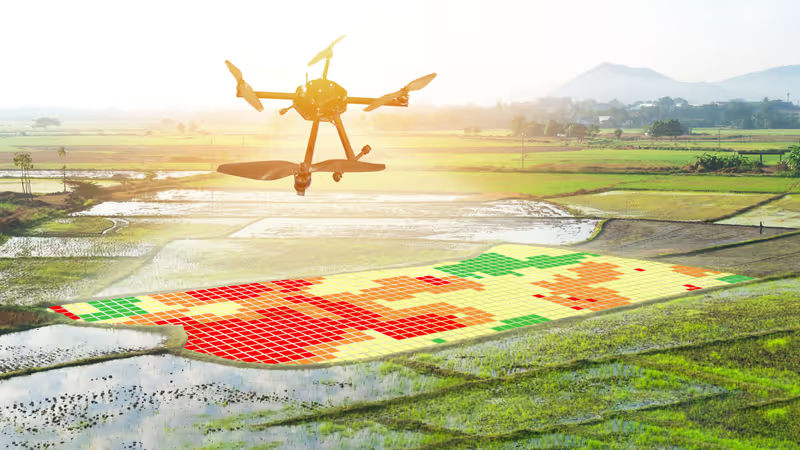| Student: | Y. Cao |
|---|---|
| Timeline: | October 2023 - 1 October 2027 |
Plant-based proteins currently dominate the global protein supply (57%), with meat (18%), dairy products (10%), fish and shellfish (6%), and other animal products (9%) making up the rest (Diouf and Sheeran 2010). Cereal crops provide an important solution as one of the richest sources of plant-based dietary protein (Samaranayaka 2017; Shewry and Halford 2002; van der Spiegel et al. 2013). Cereal proteins not only meet the growing demand for essential amino acids, but also help reduce greenhouse gas emissions and protect the environment (Grasso et al. 2021).
Given the gravity of the situation, understanding and predicting the grain protein content (GPC) of cereals has become a critical factor. Furthermore, GPC is a fundamental indicator of flour quality, influencing gluten formation in bread production, determining the characteristics of baked goods, and determining the economic value of cereal commodities (Xue et al. 2019). Rapid and accurate estimates of GPC at regional and national scales are necessary to optimize agricultural management practices, to grade harvests for commercial purposes, to manage inventories efficiently, and to plan prices and policies in response to market fluctuations (Apan et al. 2006; Skerritt et al. 2002).
This project aims to develop cutting-edge deep learning algorithms for accurate estimation and prediction of GPC from multi-temporal very high-resolution imagery acquired using unmanned aerial vehicle (UAV) platforms. The algorithms will be optimized for various sensor types, ranging from high-end hyperspectral to low-cost multi-spectral cameras.
Furthermore, the developed deep learning algorithms will be embedded on edge devices and deployed on UAV platforms, enabling real-time georeferenced mapping of GPC and other relevant crop parameters. This approach will facilitate repeated mapping across different growth stages, providing insights into GPC variations and guiding strategies for optimized fertilizer application through multi-temporal analysis.
Additionally, the project will leverage the advantages of high precision and timeliness of UAV platform data in combination with the wide coverage of remote sensing satellite data. Innovative deep learning algorithms will be developed to scale up the information from UAV imagery to hyperspectral satellite images, utilizing high-resolution data to train lower-resolution images and improve the accuracy of the information obtained from satellite data.
References
Apan, A., Kelly, R., Phinn, S., Strong, W., Lester, D., Butler, D., & Robson, A. (2006). Predicting grain protein content in wheat using hyperspectral sensing of in-season crop canopies and partial least squares regression. International Journal of Geoinformatics, 2, 93-108
Diouf, J., & Sheeran, J. (2010). The State of Food Insecurity in the World: Addressing food insecurity in protracted crises. World Food Program (WFP) and Food and Agriculture Organization of the United Nations (FAO) Joint Report
Grasso, A.C., Olthof, M.R., van Dooren, C., Broekema, R., Visser, M., & Brouwer, I.A. (2021). Protein for a Healthy Future: How to Increase Protein Intake in an Environmentally Sustainable Way in Older Adults in the Netherlands. Journal of Nutrition, 151, 109-119
Samaranayaka, A. (2017). Lentil: revival of poor man’s meat. Sustainable protein sources (pp. 185-196): Elsevier
Shewry, P.R., & Halford, N.G. (2002). Cereal seed storage proteins: structures, properties and role in grain utilization. Journal of Experimental Botany, 53, 947-958
Skerritt, J.H., Adams, M.L., Cook, S.E., & Naglis, G. (2002). Within-field variation in wheat quality: implications for precision agricultural management. Australian Journal of Agricultural Research, 53, 1229-1242
van der Spiegel, M., Noordam, M.Y., & van der Fels-Klerx, H.J. (2013). Safety of Novel Protein Sources (Insects, Microalgae, Seaweed, Duckweed, and Rapeseed) and Legislative Aspects for Their Application in Food and Feed Production. Comprehensive Reviews in Food Science and Food Safety, 12, 662-678
Xue, C., Matros, A., Mock, H.P., & Mühling, K.H. (2019). Protein Composition and Baking Quality of Wheat Flour as Affected by Split Nitrogen Application. Frontiers in Plant Science, 10





